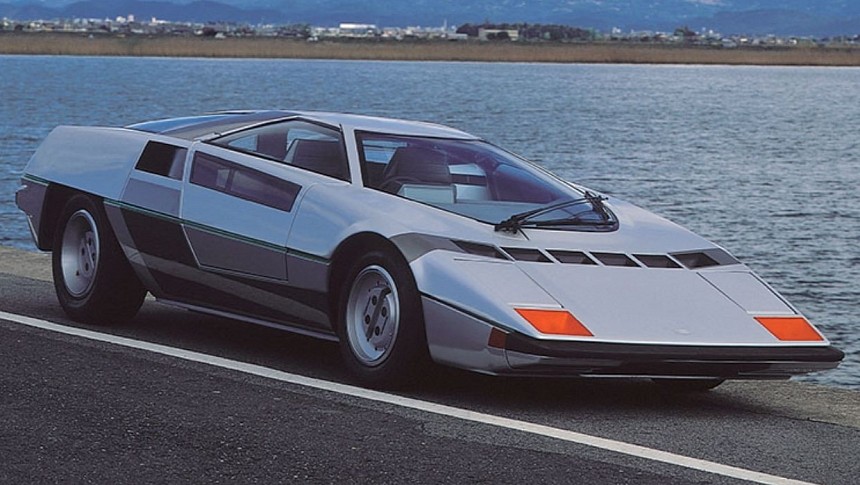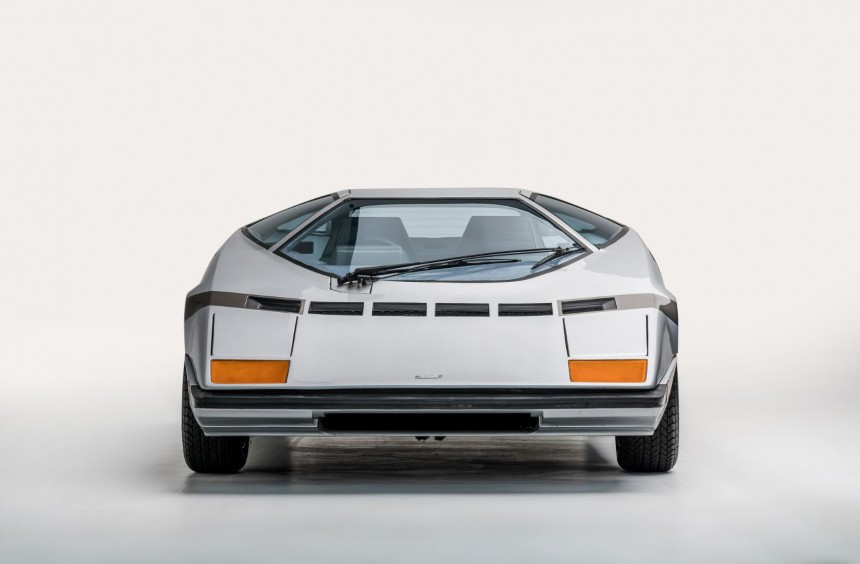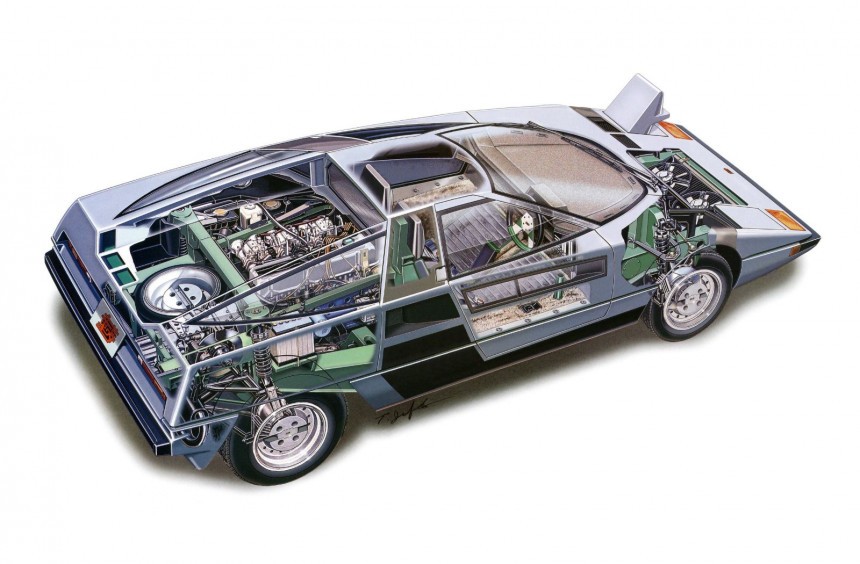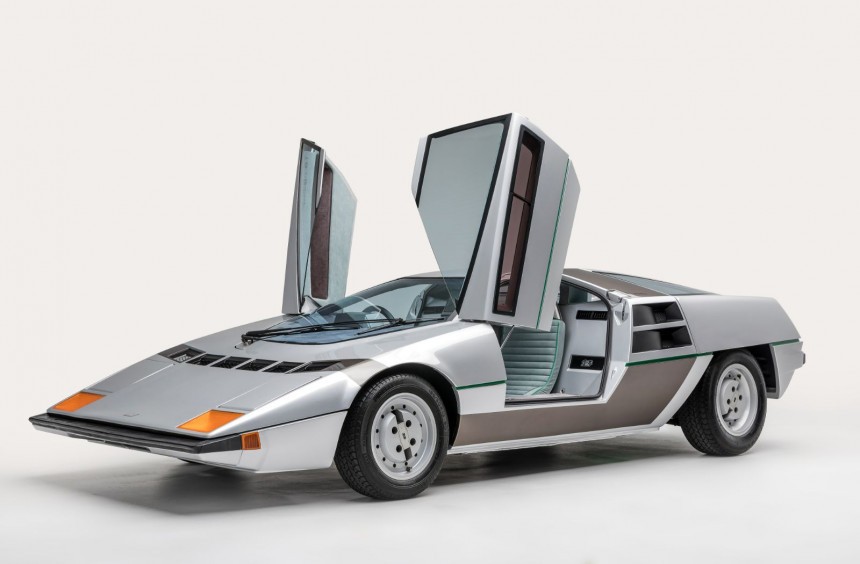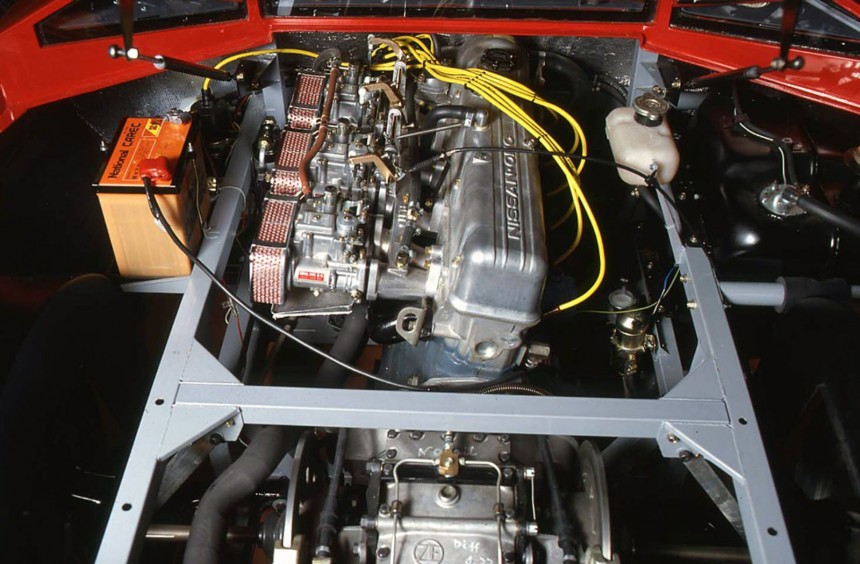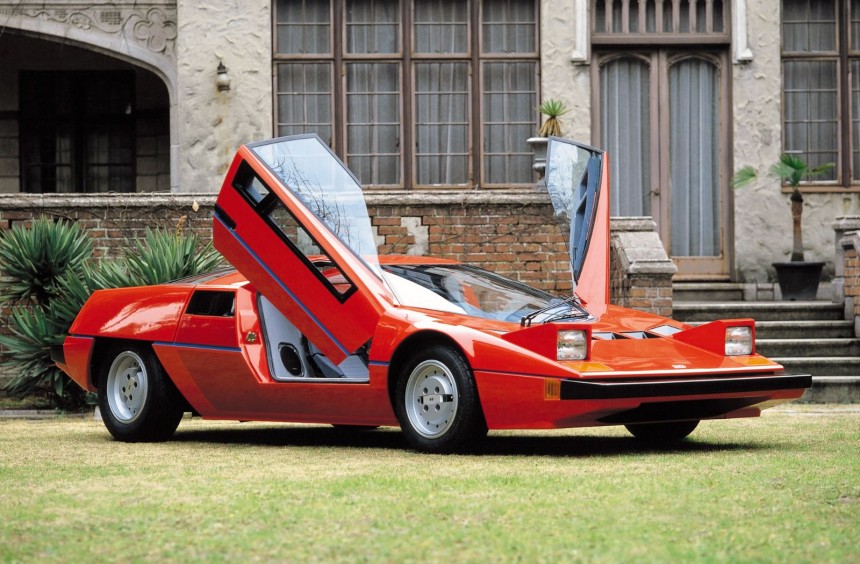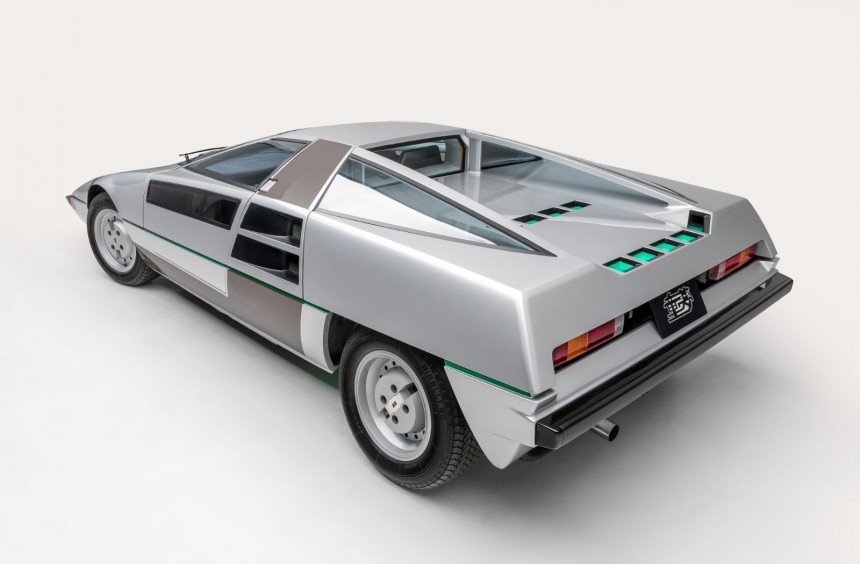Conceived in the 1970s by a small company with no prior experience in building a car from scratch, the Dom Zero was an intriguing and exceptionally well-built prototype.
After the destruction left behind by the Second World War, Japan began rebuilding with help from both its former allies and enemies. Little by little, the country rose from its ashes, with the automotive industry playing an important role in its revival.
During the 1960s and 1970s, Japanese carmakers like Toyota, Honda, and Nissan quickly transitioned from developing vehicles for the local and neighboring markets into global automotive forces.
They did so by delivering cheap yet well-built vehicles that proved to be viable alternatives to local models in critical markets such as Europe and North America.
Apart from the rise of Japanese imports, the 1960s and 1970s marked the birth of high-performance sports cars (aka supercars), which, for the most part, came from Italy.
While the biggest Japanese corporations in the auto industry also began developing budget-friendly sports cars, they never went as far as conceiving a thoroughbred supercar.
However, during the second half of the 1970s, a small, newly-established company that had never built a car from scratch sought to change that. Although the plan ultimately failed to deliver a mass-produced Japanese supercar, it gave birth to one of the country's most fascinating prototypes: the Dome Zero.
The story of this car starts with a die-hard car enthusiast named Minoru Hayashi, who wanted to build fast cars from an early age.
His ultimate dream was to develop a race car to compete at the 24 Hours of Le Mans, the legendary race that the Japanese had yet to conquer.
Hayashi's first step towards this goal came in 1965 when he rebodied a Honda S600 coupe, transforming it into a track car. Besides continuing to work on similar custom projects, the enthusiast expanded his business by founding Hayashi Racing in Osaka. This company manufactured aftermarket components like rims, steering wheels, and racing equipment, earning Hayashi enough funds for his ultimate goal.
His businesses flourished, so in 1975, Hayashi founded another company called Dome (Domu, which translates to "child's dream"). The plan was to manufacture Japan's first production supercar, the Dome Zero, and use the earnings to create a Le Mans prototype.
Hayashi assembled a small team of designers and engineers who shared his enthusiasm. Most of them had extensive experience, so work on the car began a few months after Dome was established.
Three years later, the first fully functional prototype was completed and thoroughly tested. It made its first public appearance at the 1978 Geneva Motor Show, where it captivated those in attendance with its futuristic looks and attracted a lot of interest from potential buyers.
The Dome Zero was built around a reasonably conventional steel semi-monocoque chassis with square tube subframes at the front and rear. It used a fully independent, double-wishbone suspension system with bespoke Hayashi Racing springs and shocks.
The braking system featured Girling disc brakes behind all four wheels. Those in the front were ventilated, while the ones used to stop the rear wheels were solid and mounted inboard.
But unquestionably, the most intriguing part of the Zero was its futuristic body. Except for the front wheel arches, the Zero's body was a collection of flat surfaces and sharp edges. With Lambo-like scissor doors, the fiberglass structure looked like a spaceship that stood on custom Hayashi Racing wheels.
According to Dome, the bodywork was a bespoke design conceived entirely in-house by chief stylist Masao Ono with input from founder Minoru Hayashi.
However, if you're familiar with Italian coachbuilding powerhouse Bertone's wedge-shaped concept cars that debuted in the 1970s, the Zero's lack of originality becomes unmistakable.
Its profile (and name) remind me of Bertone's 1970 Lancia Stratos Zero concept mixed with elements from the toned-down production version (the Stratos).
Furthermore, the front fascia, rear wheel arches, and elements of the entire rear evoke Lamborghini Countach vibes.
Nevertheless, the build quality and fittings were exceptional, particularly for a prototype.
While the originality of the Zero's exterior design is debatable, the origin of its powertrain is certainly not.
As you can imagine, Dome didn't have the resources to design and manufacture its own engine, so the company sourced one from Nissan.
During the early stages of the project, the unit used was an L28, carburated straight-six that came from a C130 Laurel and produced 118 hp. However, by the time it took to the stage in Geneva, the Zero was equipped with the newer, fuel-injected L28E of the Datsun 280Z, which could make a little over 140 hp. With both engines, a five-speed ZF transaxle was used.
With a curb weight of 2,028 pounds (920 kg), the Dome Zero reportedly had a better power-to-weight ratio than a contemporary Porsche 911. Still, these figures didn't make it a thoroughbred supercar, so the company planned to equip the production cars with a turbocharged version of the L28E that would be capable of delivering around 300 horses.
Sadly, that never happened because the Zero was never homologated for road use by Japanese authorities, presumably because it didn't meet the country's strict safety standards.
Despite this major drawback, Hayashi and his team didn't give up. Emboldened by their car's success at the Geneva Motor Show, they built a second, improved prototype. This time, the design focused on the European and North American markets, where they believed homologation standards would be less strict. The plan was to gain roadworthiness in these markets, then sell cars to Japanese buyers via grey market re-imports, bypassing the country's regulations.
Christened Zero P-II (sometimes referred to as P2), the modified prototype was finished in 1979. It appeared at the Chicago and Los Angeles motor shows, where it was met with excitement. Later that year, it was even tested by the prestigious Road & Track magazine, which published a positive review, but disaster struck again.
Although comprehensively revised, the Zero P-II failed to gain homologation in any of the target markets. This time, Dome shelved the project and concentrated its efforts on racing car development.
This led to the creation of a series of racing prototypes dubbed Zero RL that made Hayashi's dream come true and competed at Le Mans from 1979 to 1981.
Even if it never made it into production, the Dome Zero became an automotive star in Japan. It was featured extensively in virtually all local automotive publications and TV shows.
Its popularity led several toymakers to sign deals with Dome, and the Zero eventually became a mass-produced hit, albeit in a scaled-down form.
If you want to learn more about this fascinating Japanese prototype, I recommend watching the YouTube video below by Alfa Guy 2.
During the 1960s and 1970s, Japanese carmakers like Toyota, Honda, and Nissan quickly transitioned from developing vehicles for the local and neighboring markets into global automotive forces.
They did so by delivering cheap yet well-built vehicles that proved to be viable alternatives to local models in critical markets such as Europe and North America.
Apart from the rise of Japanese imports, the 1960s and 1970s marked the birth of high-performance sports cars (aka supercars), which, for the most part, came from Italy.
While the biggest Japanese corporations in the auto industry also began developing budget-friendly sports cars, they never went as far as conceiving a thoroughbred supercar.
However, during the second half of the 1970s, a small, newly-established company that had never built a car from scratch sought to change that. Although the plan ultimately failed to deliver a mass-produced Japanese supercar, it gave birth to one of the country's most fascinating prototypes: the Dome Zero.
A child's dream come true
His ultimate dream was to develop a race car to compete at the 24 Hours of Le Mans, the legendary race that the Japanese had yet to conquer.
Hayashi's first step towards this goal came in 1965 when he rebodied a Honda S600 coupe, transforming it into a track car. Besides continuing to work on similar custom projects, the enthusiast expanded his business by founding Hayashi Racing in Osaka. This company manufactured aftermarket components like rims, steering wheels, and racing equipment, earning Hayashi enough funds for his ultimate goal.
His businesses flourished, so in 1975, Hayashi founded another company called Dome (Domu, which translates to "child's dream"). The plan was to manufacture Japan's first production supercar, the Dome Zero, and use the earnings to create a Le Mans prototype.
A conventional chassis covered by a futuristic body
Three years later, the first fully functional prototype was completed and thoroughly tested. It made its first public appearance at the 1978 Geneva Motor Show, where it captivated those in attendance with its futuristic looks and attracted a lot of interest from potential buyers.
The Dome Zero was built around a reasonably conventional steel semi-monocoque chassis with square tube subframes at the front and rear. It used a fully independent, double-wishbone suspension system with bespoke Hayashi Racing springs and shocks.
The braking system featured Girling disc brakes behind all four wheels. Those in the front were ventilated, while the ones used to stop the rear wheels were solid and mounted inboard.
But unquestionably, the most intriguing part of the Zero was its futuristic body. Except for the front wheel arches, the Zero's body was a collection of flat surfaces and sharp edges. With Lambo-like scissor doors, the fiberglass structure looked like a spaceship that stood on custom Hayashi Racing wheels.
Designed in-house but inspired by several Bertone projects
However, if you're familiar with Italian coachbuilding powerhouse Bertone's wedge-shaped concept cars that debuted in the 1970s, the Zero's lack of originality becomes unmistakable.
Its profile (and name) remind me of Bertone's 1970 Lancia Stratos Zero concept mixed with elements from the toned-down production version (the Stratos).
Furthermore, the front fascia, rear wheel arches, and elements of the entire rear evoke Lamborghini Countach vibes.
Nevertheless, the build quality and fittings were exceptional, particularly for a prototype.
Powered by a mid-mounted Nissan engine
As you can imagine, Dome didn't have the resources to design and manufacture its own engine, so the company sourced one from Nissan.
During the early stages of the project, the unit used was an L28, carburated straight-six that came from a C130 Laurel and produced 118 hp. However, by the time it took to the stage in Geneva, the Zero was equipped with the newer, fuel-injected L28E of the Datsun 280Z, which could make a little over 140 hp. With both engines, a five-speed ZF transaxle was used.
With a curb weight of 2,028 pounds (920 kg), the Dome Zero reportedly had a better power-to-weight ratio than a contemporary Porsche 911. Still, these figures didn't make it a thoroughbred supercar, so the company planned to equip the production cars with a turbocharged version of the L28E that would be capable of delivering around 300 horses.
The second prototype
Despite this major drawback, Hayashi and his team didn't give up. Emboldened by their car's success at the Geneva Motor Show, they built a second, improved prototype. This time, the design focused on the European and North American markets, where they believed homologation standards would be less strict. The plan was to gain roadworthiness in these markets, then sell cars to Japanese buyers via grey market re-imports, bypassing the country's regulations.
Christened Zero P-II (sometimes referred to as P2), the modified prototype was finished in 1979. It appeared at the Chicago and Los Angeles motor shows, where it was met with excitement. Later that year, it was even tested by the prestigious Road & Track magazine, which published a positive review, but disaster struck again.
Although comprehensively revised, the Zero P-II failed to gain homologation in any of the target markets. This time, Dome shelved the project and concentrated its efforts on racing car development.
It failed to become a production model, but it became a successful toy
Even if it never made it into production, the Dome Zero became an automotive star in Japan. It was featured extensively in virtually all local automotive publications and TV shows.
Its popularity led several toymakers to sign deals with Dome, and the Zero eventually became a mass-produced hit, albeit in a scaled-down form.
If you want to learn more about this fascinating Japanese prototype, I recommend watching the YouTube video below by Alfa Guy 2.
